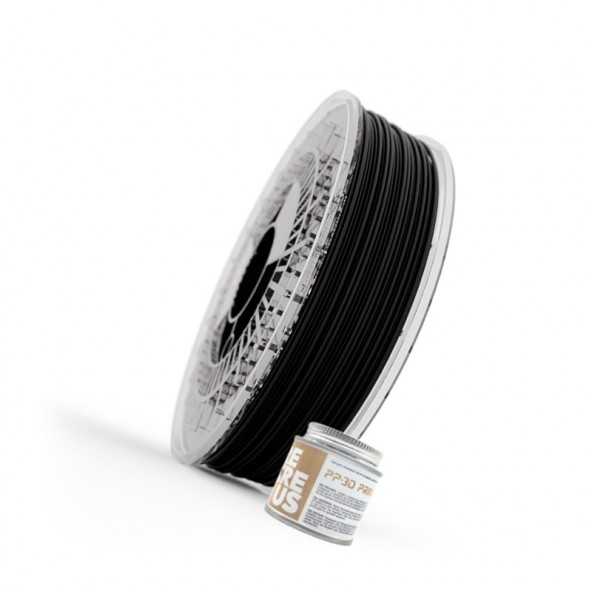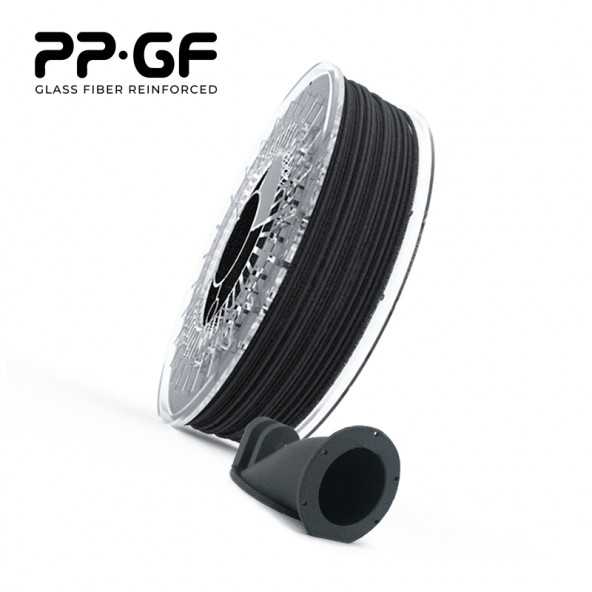Design of devices for masks and respirators in emergency situations with PP·3D polypropylene filament
- Company: [artefactos]
- Sector: Medical
- Material: Filamento de polipropileno PP·3D
- Mission: Help healthcare personnel with the design of 3D printed devices to cover the needs of lack of protective equipment and masks, as well as respirators for patients, given the shortage of material caused by Covid-19
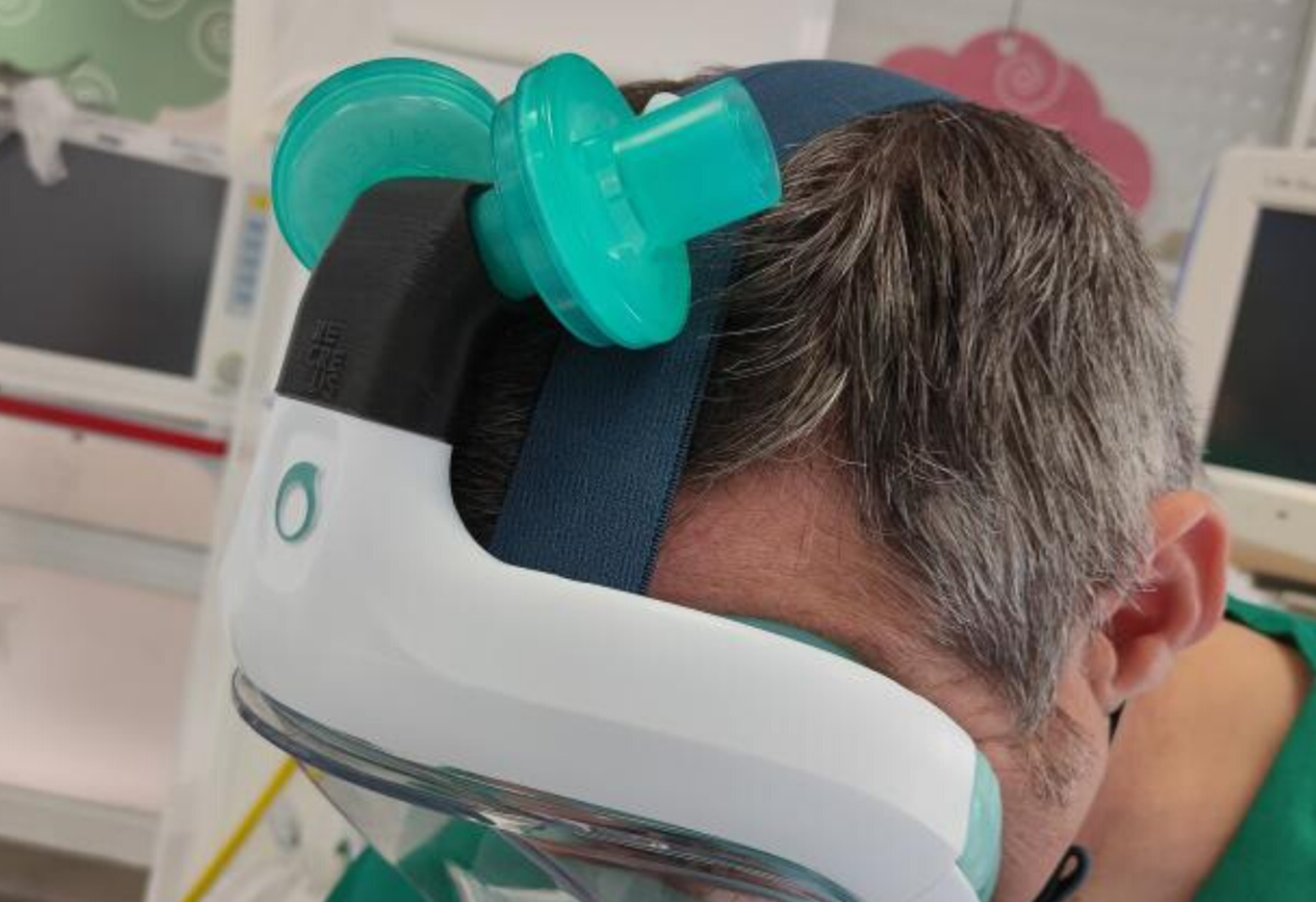
The tremendous lack of protective materials for healthcare professionals fighting Covid-19, as well as the lack of respirators in hospitals, led the team of [artefactos] to design, create and produce parts to help in the midst of a pandemic crisis.
The [artefactos] team comes to Recreus for help and advice regarding materials that could be used.
“We needed solutions that were fast, efficient, safe and with maximum reproducibility and accessibility. Even with industrial scalability. With the PP·3D filament from Recreus we fulfilled all the established premises. We achieve an adjustment in the mechanical joint, the necessary tightness and we ensure non-permeability. In addition to allowing autoclave sterilization.”
Mercedes Llorens, design and development in [artefactos]
CHALLENGE
Manufacture devices through 3D printing offering maximum protection and security against Covid-19
The challenge was not easy. Several pieces had to be designed, one to adapt to the diving masks so that they could be transformed and used as protective masks for emergency situations, and another device to be able to duplicate the irrigation of the respirators' power supply.
Both devices or parts had to be sufficiently secure and comply with the protection against viruses. Minimizing and eliminating the risk of porosity in the piece.
Solutions were needed:
- fast
- efficient
- safe
- reproducible
- maximum accessibility
- industrial scalability
SOLUTION
#SKUBA and #SPLITTER, two 3D printed devices with the PP3D polypropylene filament
The [artefactos]team developed two projects / devices:
- #skuba: adapter for sanitary protection emergency mask.
- #splitter:adapter for optimally dividing a lung ventilation circuit for two patients.
Both printed with our PP 3D polypropylene filament.
.jpg)
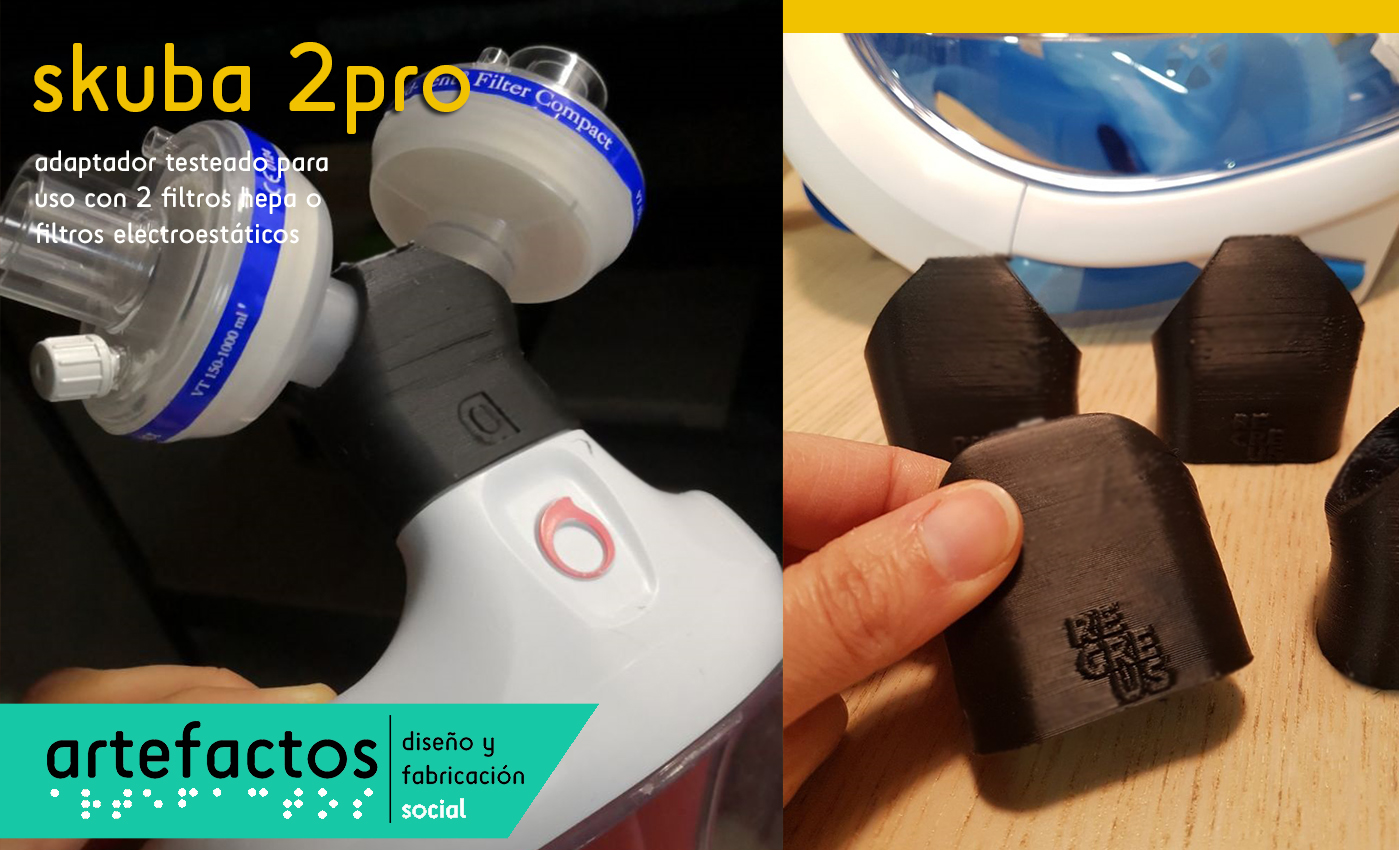
SKUBA
Adapter for sanitary protection emergency mask.
- Design: [artefactos]
- Material: Recreus PP·3D polypropylene filament
- Challenges: industrial scalability, validation, resistance to sterilization and autoclaving, tightness, durability, reliability, ...
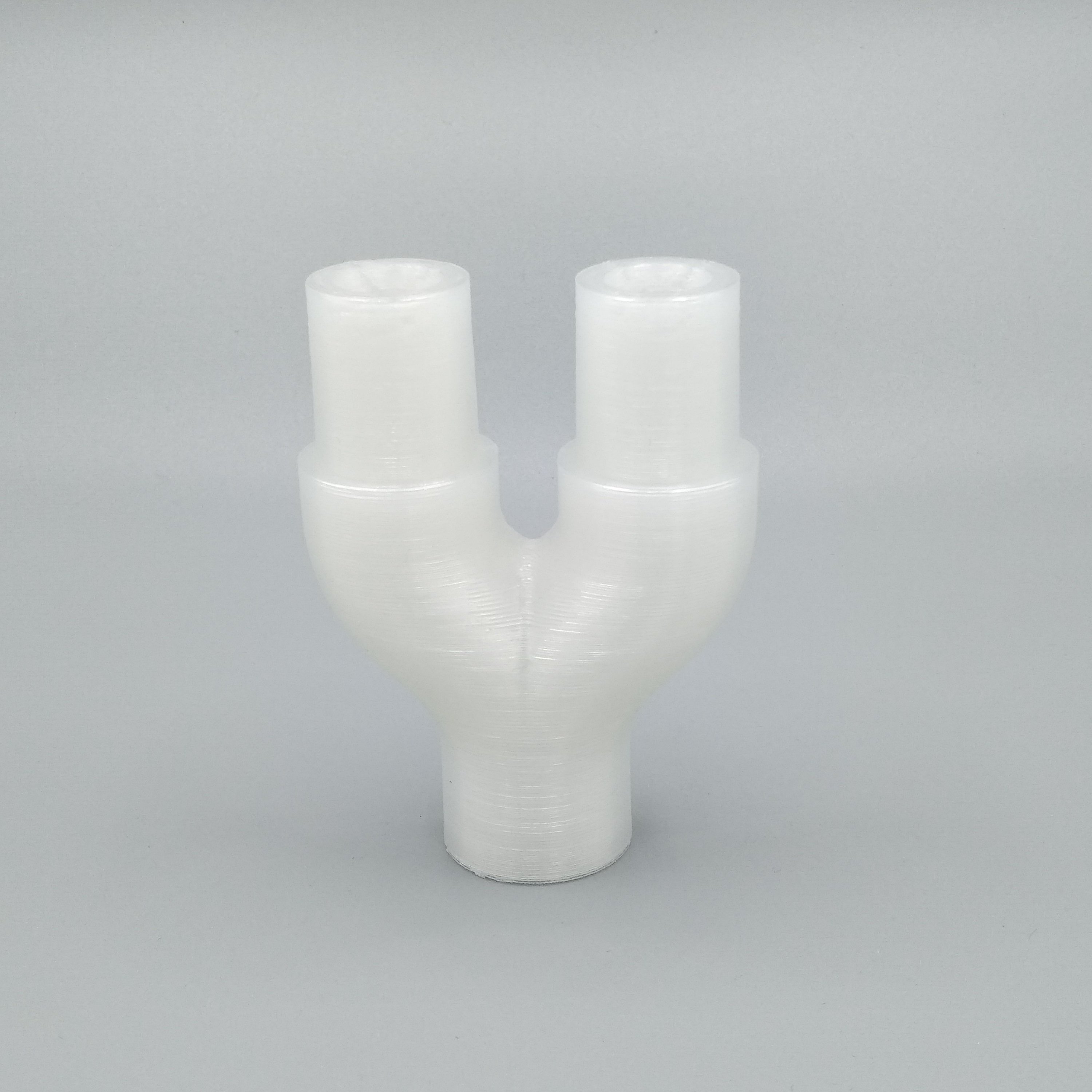
.jpg)
SPLITTER
Adapter for division of the lung ventilation circuit for two patients .
- Design: [artefactos]
- Material: Recreus PP·3D polypropylene filament
- Challenges: industrial scalability, validation, resistance to sterilization and autoclaving, tightness, durability, reliability, ...
Both devices successfully passed the testing tests that were carried out from other hospitals, such as October 12 in Madrid or the Hospital de Albacete. In the latter, the verification test of [#splitter] was carried out in a sanitary ventilation equipment, with excellent results. In addition, both pieces were tested in the autoclave.
RESULT
The PP·3D polypropylene filament was the solution to be able to print these pieces
Among other reasons, it was the ideal material:
- To ensure the non-permeability of the virus , one of the most critical points of these applications. The virus is very small in size, and that was one of the top concerns during the design and development process for both [#skuba] and [#splitter]. Especially for the [#skuba] mask, since it was going to be used to prevent contagion from healthcare professionals. It must be taken into account that most of the materials printed by different methods can result in porous pieces, not at first glance, but with a larger pore size than the coronavirus itself. And with PP · 3D we ensured non-permeability.
- To achieve great tightness at the junction or connection with the mask itself and the filters . It had to be achieved in the fewest number of pieces possible and with an optimized geometry that would withstand autoclave temperatures without deformation. For this reason, with the PP · 3D filament all the established premises were fulfilled. An adjustment in the mechanical joint was achieved, even better than with flexible materials, and the necessary tightness ensuring non-permeability.
- It allows intense sterilization in order to disinfect the material by autoclaving .
- It has a slow, but adequate flexural resilience and good resistance. The [artefacts] team was pleasantly surprised, as they discovered in this filament characteristics that other thermoplastic filaments do not offer.
- Due to its surface finish, less rough than PLA, which makes it more accepted by the user , which is a good advantage.

 gb
gb  es
es fr
fr de
de it
it